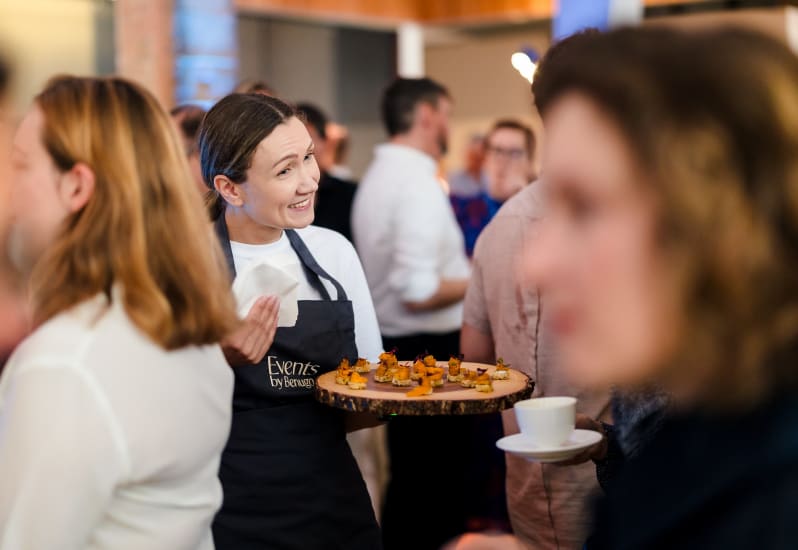This July, we had the pleasure of welcoming guests to the highly anticipated launch of The Future of Food exhibition at the Science Museum, a groundbreaking exploration of how food, technology, and sustainability intersect to shape what’s next on our plates.
The event brought together a dynamic community of industry leaders, food innovators, scientists, and changemakers for a morning of thought-provoking discussion and discovery. Guests were treated to a series of captivating talks from some of the most influential voices in sustainability, science, and food systems innovation, setting the tone for a future-focused, curiosity-fueled experience.

One of the standout moments of the morning was a live cooking demonstration by Made in Hackney, a community cookery school on a mission to inspire change through accessible, inclusive plant-based cooking. Their energetic session gave guests a flavour of how sustainable cooking can be both creative and empowering, regardless of experience or background.
Events by Benugo curated an imaginative and daring menu designed to spark conversation and challenge perceptions. Guests built their own yoghurt pots with options like cricket, raisin, and pistachio flapjack, or topped with delicately sugared mealworms, a nod to alternative proteins that are becoming increasingly relevant in the global food conversation. A vibrant selection of plant-based canapés, created in collaboration with our pioneering supplier partners, showcased the possibilities of next-generation ingredients without compromising on flavour or flair.

As proud sponsors of The Future of Food, Benugo is thrilled to support this vital exhibition, now open to the public and free to explore. For those intrigued to continue the edible adventure, the museum’s Diner and Energy Café are serving up a special range of limited-edition dishes and treats, including raspberry and lemon drizzle cake, and our unforgettable cricket, carrot and walnut cupcakes crowned with sugared mealworms.

About The Exhibition
Today, Future of Food, a major new exhibition examining how science can help us find more sustainable ways to grow and produce, purchase and cook, eat and enjoy food, opened at the Science Museum. It features over 100 historic and contemporary objects that highlight major food milestones, from 3,500-year-old fermented sourdough bread to the first beef steak grown outside a cow.
The free exhibition invites visitors to discover how our complex and interconnected food practices impact the climate, nature, and society. It explores how our everyday consumption can lead to more sustainable food production and showcases stories of farmers, scientists and community leaders driving this positive change across the globe.
On entering Future of Food, visitors will discover how science enabled growing populations to be better fed in the 20th century – not just the ideas and technologies that transformed farming, but the challenging environmental legacy they left. On display is a fragile potato leaf, one of the few surviving specimens collected during the Irish potato famine. The blight disease rampaged through Ireland’s farmlands because of monoculture: the crops were all the same variety and grown together on the same land. Also on display is Fritz Haber’s sample of liquid ammonia; one of the most significant scientific inventions of the 20th century, it helped feed billions through the creation of synthetic nitrogen fertiliser. Human ingenuity and our ecological vulnerability led not just to the invention of synthetic fertilisers, pesticides and increasing yields, but to the exploitation of the sea, intensive factory farming and monoculture crops.
Visitors can explore how exciting developments in biotechnology could transform how food is produced, creating more planet-friendly and climate-adapted alternatives to animal products and crops. Fermentation is also being used to make dairy from microbes. Prototype products on display offer a glimpse into the near future where the taste and texture are indistinguishable from animal-derived dairy with a fraction of the environmental footprint. Cell-grown meat and fish, including the first beef steak grown outside a cow, are displayed alongside genetically engineered animals and crops such as a bird flu-resistant chicken and fertiliser-free barley.





